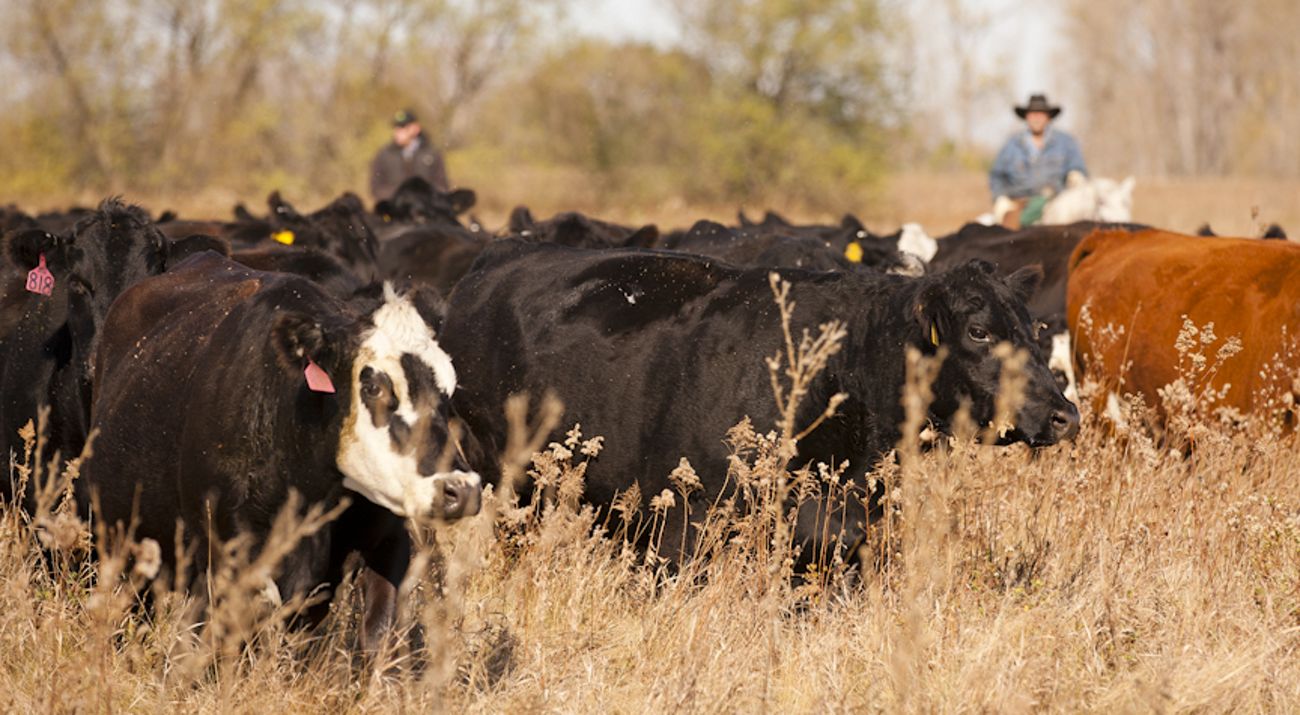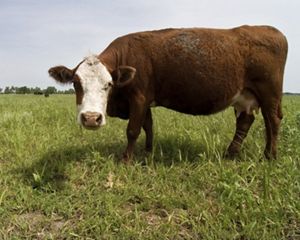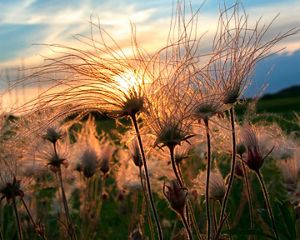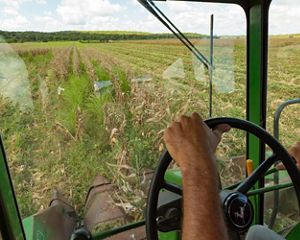Stories in Minnesota, North Dakota and South Dakota
Beef and Bison Can Help in Fight Against Climate Change
When you think of iconic natural areas in the United States, what comes to mind? Yellowstone and the Everglades? Both are spectacular and full of life. You may not know this, but their pine and mangrove forests store an immense amount of carbon. How about the Great Plains?
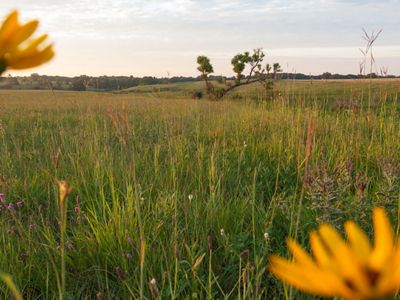
Grassland Soils Store Vast Amounts of Carbon
Much of the central United States was once dominated by grasslands, which are the most threatened, least protected habitat type on Earth—more at risk than the Amazon rainforest. Often overlooked for their natural beauty, native grasslands are not only incredibly diverse, but they are also enormously important in tackling climate change. Remnants like Schaefer Prairie are only a little more than an hour away from the Twin Cities metro area, but most of the land they occupied prior to European settlement is now farmland.
Preserving grasslands has enormous potential in the United States’ ability to help solve one of the world’s most significant conservation challenges. In both North Dakota and South Dakota, it’s the top natural climate solutions opportunity. In Minnesota, it’s one of the best such strategies available.
Grasslands or prairies cover about 15% of North America today. Most are west of the Mississippi River. And while at first glance, there may seem to be little to see, a closer look reveals more than 500 different native plants, hundreds of species of birds and mammals and countless insects including pollinators such as bees and butterflies.
Dig a little deeper and you understand that the rich black dirt underneath the unassuming surface holds vast amounts of carbon. Through photosynthesis, prairie plants remove carbon from the atmosphere, replacing it with oxygen and storing that carbon in their root systems, some of which extend nearly 15 feet into the rich soil.
Outside of 20 publicly owned National Grasslands, most of the remaining grasslands in the United States are in private ownership. Due to market forces, many of these lands are at risk of being converted to cropland including corn and soybeans. When grasslands are plowed under, more carbon is released into the atmosphere, making it more difficult to avoid the worst effects of climate change.
Quote

...protecting the top 10 percent of the remaining grasslands in the Missouri Coteau would be equivalent to taking 2.5 million passenger vehicles off the road.
The amount of carbon in an acre of grassland versus an acre of cropland depends on soil type, topography and other factors, but based on numerous studies researchers have determined that converting grassland to cropland results in a 30 to 40 percent loss of carbon stored in the ground.
To put that in perspective, protecting the top 10 percent of the remaining grasslands in the Missouri Coteau region of North Dakota and South Dakota would be equivalent to taking 2.5 million passenger vehicles off the road.
Fire and Grazing are Essential to Healthy Grasslands
Grasslands require a couple of things to keep them healthy and diverse: fire and grazing. Fires set by Indigenous people along with wildfires triggered by lightning would periodically sweep through the grasslands, keeping trees, brush and weedy plants at bay.
Historically, grasslands were grazed by bison and elk. These large mammals not only trimmed the grasses, but their hooves stirred the soil, pushing seed for native grasses and forbs and dead plants down into the ground to create new life. Their manure and urine fertilized the soil, and then they moved on to new pastures, giving prairie time to rest and recover. Today, bison, and in fewer cases elk, still perform this needed natural service, but another animal also serves the same purpose: the common cow.
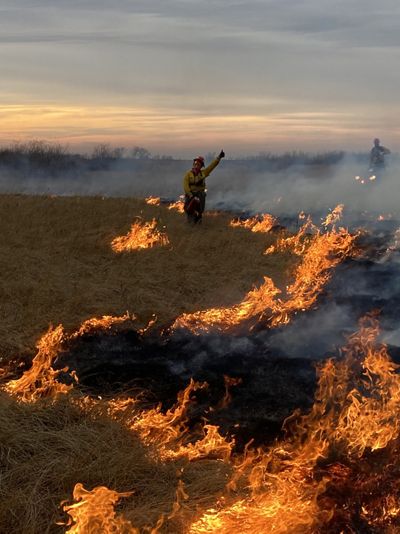
I know what you are thinking. We’ve all heard that cattle are bad for our climate because of the methane they produce. And this is true. Cattle do produce methane as do bison and other ungulates. This gas contributes to global warming and much is being done to identify a way to suppress this naturally occurring gas to mitigate those impacts.
But cattle actually mimic what bison and elk did naturally and are needed to help maintain healthy grasslands. Ranchers rotate their cows through pastures, stimulating the growth of grasses and wildflowers through their grazing and enrichment of the soil. Running cattle keeps the grass side up and carbon in the ground—and out of the atmosphere. Many landowners also use prescribed burns to stimulate the growth of forbs and keep invasive plants from taking over.
Quote
Simply put, cattle take something we cannot eat and convert it to something that many people do.
Cattle also provide the main source of revenue needed to keep grasslands intact, on the tax rolls and in production. Simply put, cattle take something we cannot eat (grass) and convert it to something that many people do: meat. And they help sustain grasslands both ecologically and financially.
Grass-Fed Businesses Are Part of the Solution
The Nature Conservancy works with partners and private landowners to identify common ground and ways in which, together, we can make an impact on grassland conservation. And where the grasslands have already been converted, we identify solutions to putting the grass back, restoring them to their native beauty. We also engage with supply chains, helping companies improve how and where they source their products.
You, too, can be a part of the solution. By supporting grass-based businesses, such as grass-fed beef and bison, you are supporting farmers and ranchers who are making a positive impact on our climate. You may see some of these folks at your local farmers market and I’d encourage you to stop by and fight climate change with your wallet. Buy their products. Get to know them. Enjoy the benefits they provide that go far beyond the products they sell. Things like open space, clean air and water and beautiful, wild places close to home.
